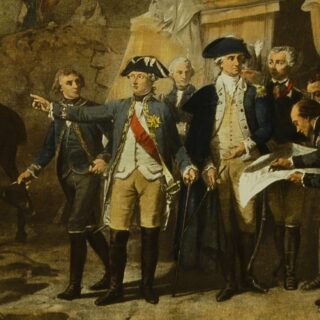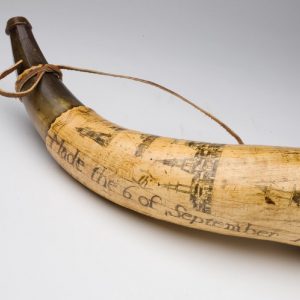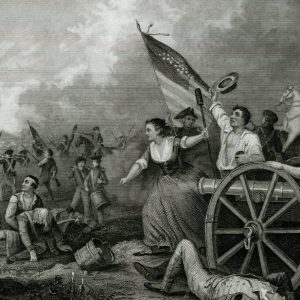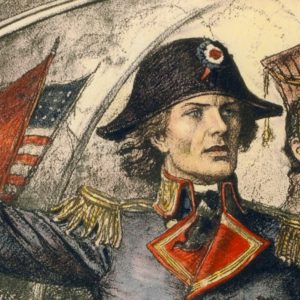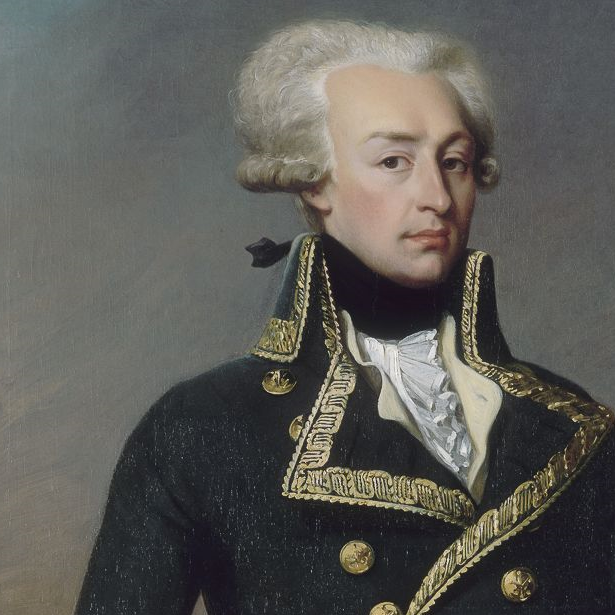These lessons ask students to consider how Americans fought and won a war for national independence, and how that war shaped the republic and our national identity.
DIPLOMACY AND DEVOTION: THE FRANCO-AMERICAN ALLIANCE IN THE AGE OF REVOLUTIONS
The best representation of the relationship between France and the United States as political and military allies that began with the American Revolution and has continued to the present day is not one of philosophy or the shared influence of the Enlightenment; it is the personal relationship between George Washington and Marie-Joseph Paul Yves Roch Gilbert du Motier, the marquis de Lafayette.
diplomacy and devotion
THE FIGHT FOR INDEPENDENCE: A VIEW FROM THE FRONT LINES
This lesson invites students to explore the experiences of a Revolutionary War solder, including items used and the challenges they faced.
A View from the Front Lines
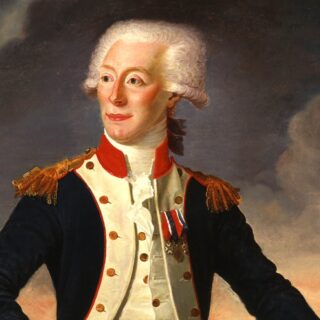
FRANCE AND THE WAR FOR AMERICAN INDEPENDENCE
This lesson is designed to teach freshmen French immersion students about French involvement in the Revolutionary War and how to analyze primary sources. It was created assuming a basic understanding of the American Revolution as taught in most American middle/junior high schools. It begins with a discussion of Lafayette as a bridge between what students already know (thank you Lin-Manuel Miranda). Once the connection is made, the lesson intentionally does not address Lafayette, but sources and events with Lafayette could easily be included, if desired.
France and the War for American Independence
THE INFLUENCE OF WOMEN DURING THE AMERICAN REVOLUTION
Students will explore the various ways that women supported or resisted the Revolutionary War effort economically, politically and militarily.
Women in the Revolution

JOHN LAURENS’ REVOLUTIONARY PLAN
At the heart of the Revolutionary War were our highest ideals of liberty and sacrifice. However, at the same time, enslaved Africans toiled to support the American economy. John Laurens, son of Continental Congress President Henry Laurens and a member of the South Carolina aristocracy, dared to challenge the racial status quo, suggesting that African Americans should be allowed to serve in the military in return for their own freedom. His unconventional idea foreshadowed the crusade for racial equality the nation has been working on since.
John Laurens' Revolutionary Plan
KOSCIUSZKO, SON OF LIBERTY
Upon hearing “the shot heard around the world,” the rebellion of the American colonies, Poland’s Thaddeus Kosciusko was eager to test his military skills in America, serving the ideals of freedom that inspired the Revolution. When he left America, Kosciuszko directed that all his American assets be sold and used to buy and free the enslaved, becoming one of the very first American Revolutionary War heroes to explicitly oppose slavery.
Kosciuszko, Son of Liberty
LAFAYETTE’S TUMULTUOUS ROAD TO YORKTOWN
To better understand Lafayette and his troops’ plight, as well as his continued commitment to the American cause, students will read and evaluate Lafayette’s letter to General Nathanael Greene from late August 1781, just two months before the American victory on the Yorktown peninsula.
Lafayette's Tumultuous Road to Yorktown
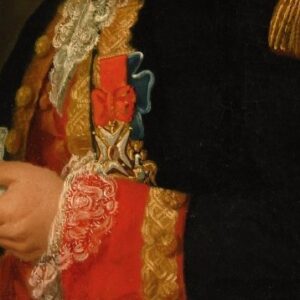
NAVAL UNIFORM ANALYSIS
Like today, the clothing sailors and naval officers wore during the eighteenth century reflected their rank, and often, their social standing. Using the traveling trunk materials in the Revolutionary War at Sea traveling trunks, students will explore how clothing such as military uniforms from the past can be used to better understand historical figures and events.
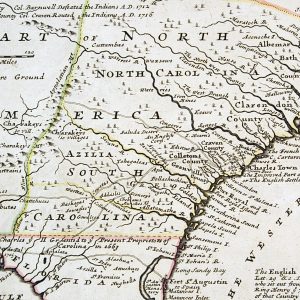
PERSPECTIVE, PLACE, AND PROPAGANDA IN REVOLUTIONARY SOUTH CAROLINA
This lesson asks students to consider how where a person lived in South Carolina influenced their perspective of the American Revolution and how propaganda can be used during war. Students will be able to compare and contrast the perspectives of Patriots and Loyalists and to analyze primary source documents for bias.
Revolutionary South Carolina
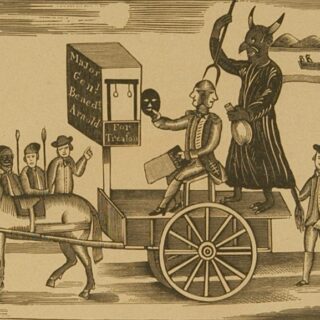
REVOLUTIONARY HEROISM AND BETRAYAL: BENEDICT ARNOLD
This lesson will address one of the major challenges that faced the young republic: a traitor. Betrayal calls into question honor, integrity, and the highest ideals of our country. Does a traitor deserve to get credit for successes prior to their betrayal? Does heroism outweigh betrayal? Using primary and secondary sources, students will participate in a multi-day, inquiry-based activity which will culminate in deciding whether or not Benedict Arnold has earned his place on the Saratoga Monument, and if he should be named on the boot monument.
Benedict Arnold
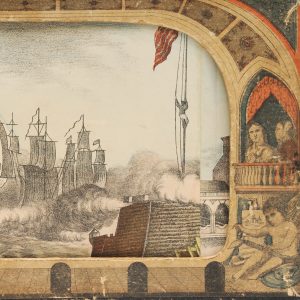
THE SIEGE OF CHARLESTON
The events surrounding the American Revolution transformed British colonists into American citizens. This lesson will help students understand South Carolina’s pivotal role in this process through the experience of its capital city, Charleston, and will introduce a nineteenth-century educational toy, the “Historiscope.”
Siege of Charleston
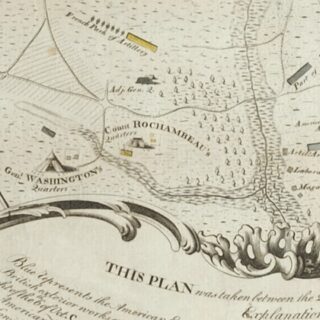
“THE WELCOME NEWS OF YOUR ARRIVAL…”
The Washington-Rochambeau Revolutionary Route follows the fifteen-month trail of French commander General Jean Baptiste Donatien de Vimeur, comte de Rochambeau, and his force of more than five thousand French soldiers, from their landing in Newport, Rhode Island, in July 1780 to their rendezvous with George Washington and the Continental Army, and the two armies’ combined march southward to Yorktown, Virginia, where they faced the British in the fall of 1781. These lessons provide a glimpse into late eighteenth-century America through the eyes of the French soldiers and officers engaged along the route, showing a fascinating outside perspective on both life in the colonies as well as the diverse population of soldiers in the American army.
The Welcome News of Your arrival...

WHERE DID THE LOYALISTS GO? ONE WOMAN’S JOURNEY
Students will use both primary and secondary sources to examine the legitimacy of Patriot and Loyalist claims during the American Revolution based on the experience of Georgia resident Elizabeth Lichtenstein Johnston.
One Woman's Journey
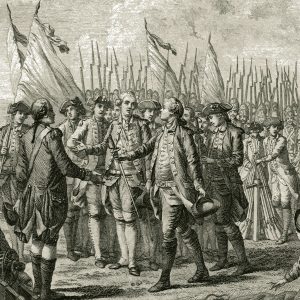
YORKTOWN PERSPECTIVES
This lesson comparing and contrasting French and American views of the siege and surrender of Yorktown could be used in an upper middle school history class toward the end of the study of the Revolutionary War or at the beginning of the year in a high school class as a way to teach document analysis and perspective using familiar content.
Yorktown Perspectives